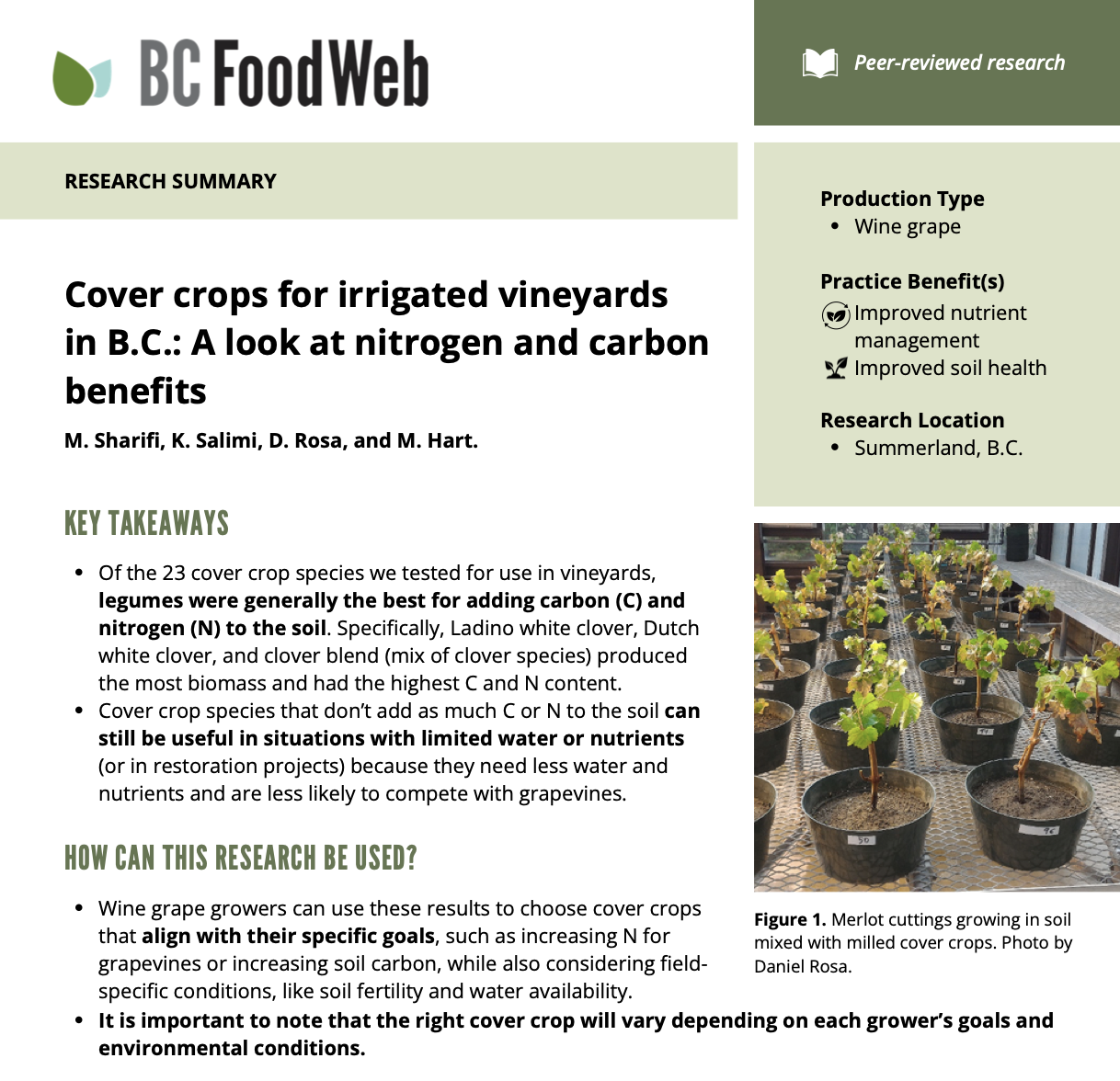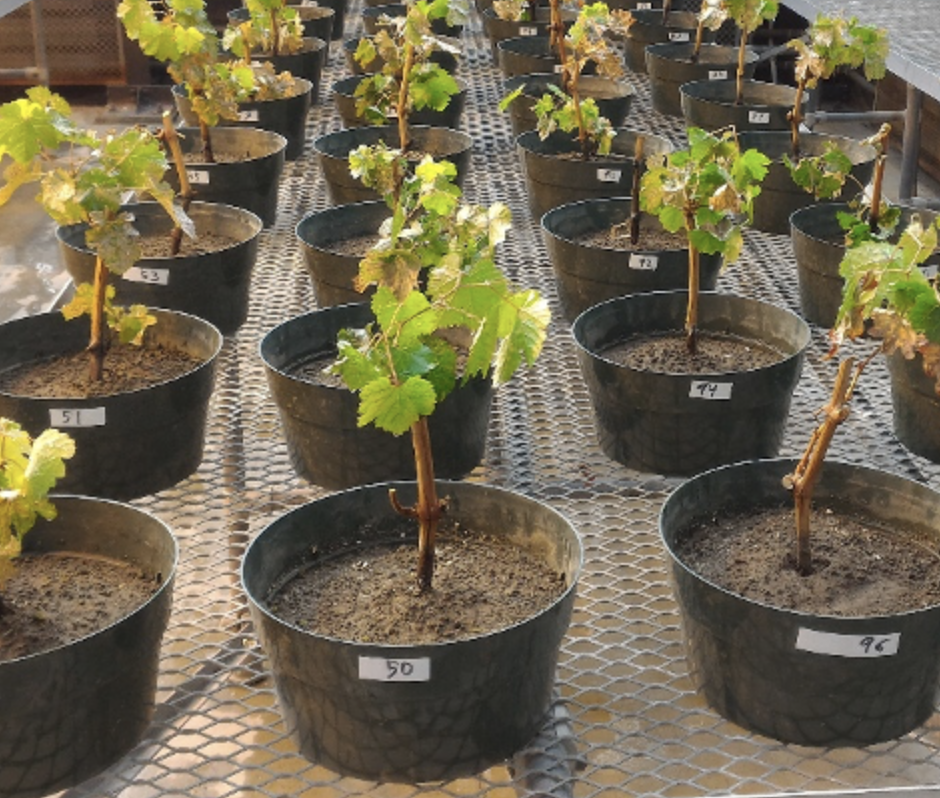Cover crops for irrigated vineyards in B.C.: A look at nitrogen and carbon benefits
Introduction
This study included two experiments. First, we grew cover crops and measured their biomass, N and C concentration, and calculated total N and C content in their biomass. Then we milled the cover crop biomass and mixed them back into the soil and grew grapevines to see how each cover crop affected initial grapevine growth and N and C uptake.
Click the link above to read the full research brief.
About this Brief
This brief was prepared by Juliana Cao from the BC Food Web team with the help of Mehdi Sharifi, and is based on the following scientific journal article:
Sharifi, M., Salimi, K., Rosa, D., & Hart, M. (2024). Screening cover crops for utilization in irrigated vineyards: A greenhouse study on species’ nitrogen uptake and carbon sequestration potential. Plants, 13, 1959. https://doi.org/10.3390/plants13141959
Have Feedback or Questions?
Let us know your thoughts about the brief at bc.foodweb@ubc.ca.
Key Findings
- Of the 23 cover crop species we tested for use in vineyards, legumes were generally the best for adding carbon (C) and nitrogen (N) to the soil. Specifically, Ladino white clover, Dutch white clover, and clover blend (mix of clover species) produced the most biomass and had the highest C and N content.
- Cover crop species that don’t add as much C or N to the soil can still be useful in situations with limited water or nutrients (or in restoration projects) because they need less water and nutrients and are less likely to compete with grapevines.



